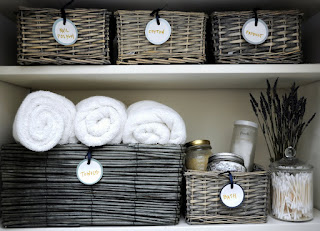Best Linen Storage Tips
Florida snowbirds have gracefully enjoyed their relaxing stay in their winter residences, and now the family back home is calling and tweeting about your return plans. Perhaps you are starting your routine to store your belongings and have noticed that some of your linens have become discolored, faded, and have splits and losses in material.
Damage to textiles occurs when light, heat, dust, insects, plastic bags and improper storage interact. You want next season's linens to be clean, crisp and well preserved while you are away.
Do not use chlorine bleach as it can discolor the fabric. Use oxygen bleach or hydrogen peroxide for whites. Some spot stains disappear with club soda, hairspray or rubbing alcohol. Be sure to test a hidden area first, so you do not ruin your favorite pieces. Next, air dry using a padded hanger or a flat drying surface rack. Iron with linen setting and steam while the fabric is damp for the best result.
Unless the fabric tag suggests otherwise, you can machine wash acrylic, linen, polyester, nylons and cotton fabrics on the cold delicate or short wash cycle. Wool, taffeta, silk, velvet, and acetate should go to the dry cleaner. Don't be afraid to call your local dry cleaner or laundromat if you are unsure how to clean. They are happy to help suggest ways to give your items longevity.
Clean and save the old ones store the new ones inside conveniently. Roll fluffy, bulky towels, and bedding sets matched together and place in old pillowcases or sheets allowing air to circulate. You may seal in a clear polyethylene container or acid-free boxes and tubes for tablecloths.
Only use cotton twill tape or book binding tape for closure. If using a chest drawer or wood for storage, cover with Marvelseal for maximum long-term conservation. Then apply acid-free paper between sets and complement with white sachet bags and scented drawer liners.
Antique or heirloom linen pieces use 100 percent chemical -free cotton bags of museum quality. Attaching photographs or labels to the outside will prevent you from having to go through your items more than once a year. Preserve all your vintage linens, tablecloths and quilts with special care and handling to pass down from one generation to the next.
Damage to textiles occurs when light, heat, dust, insects, plastic bags and improper storage interact. You want next season's linens to be clean, crisp and well preserved while you are away.
Sort and Properly Clean Your Fabrics
Be sure to sort through all your items first. Separate fabrics, whites, and colors by quickly reading their manufacturer's labels. You may be surprised that a tag shows a blend of materials or that you cannot dry clean. You can hand wash linen items in a clean sink with lukewarm water and mild detergent.Do not use chlorine bleach as it can discolor the fabric. Use oxygen bleach or hydrogen peroxide for whites. Some spot stains disappear with club soda, hairspray or rubbing alcohol. Be sure to test a hidden area first, so you do not ruin your favorite pieces. Next, air dry using a padded hanger or a flat drying surface rack. Iron with linen setting and steam while the fabric is damp for the best result.
Unless the fabric tag suggests otherwise, you can machine wash acrylic, linen, polyester, nylons and cotton fabrics on the cold delicate or short wash cycle. Wool, taffeta, silk, velvet, and acetate should go to the dry cleaner. Don't be afraid to call your local dry cleaner or laundromat if you are unsure how to clean. They are happy to help suggest ways to give your items longevity.
Preparing and Storing Clean Linens
If you are low on space, The Closet Edition can assist with a total makeover of your storage area, including accessories. In the interim, you should prepare your clean cotton and linens for storage by keeping only three sets of bedding and towels per person and guest room.Clean and save the old ones store the new ones inside conveniently. Roll fluffy, bulky towels, and bedding sets matched together and place in old pillowcases or sheets allowing air to circulate. You may seal in a clear polyethylene container or acid-free boxes and tubes for tablecloths.
Only use cotton twill tape or book binding tape for closure. If using a chest drawer or wood for storage, cover with Marvelseal for maximum long-term conservation. Then apply acid-free paper between sets and complement with white sachet bags and scented drawer liners.
Antique or heirloom linen pieces use 100 percent chemical -free cotton bags of museum quality. Attaching photographs or labels to the outside will prevent you from having to go through your items more than once a year. Preserve all your vintage linens, tablecloths and quilts with special care and handling to pass down from one generation to the next.



Comments
Post a Comment